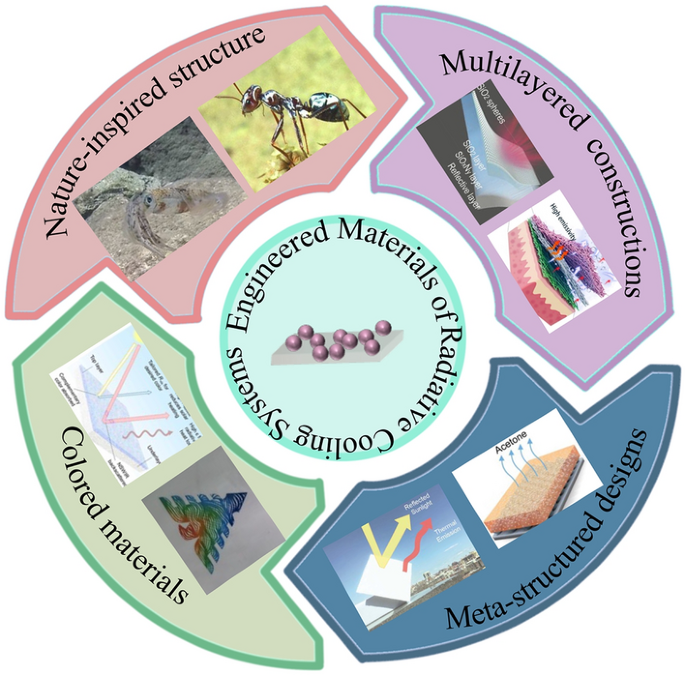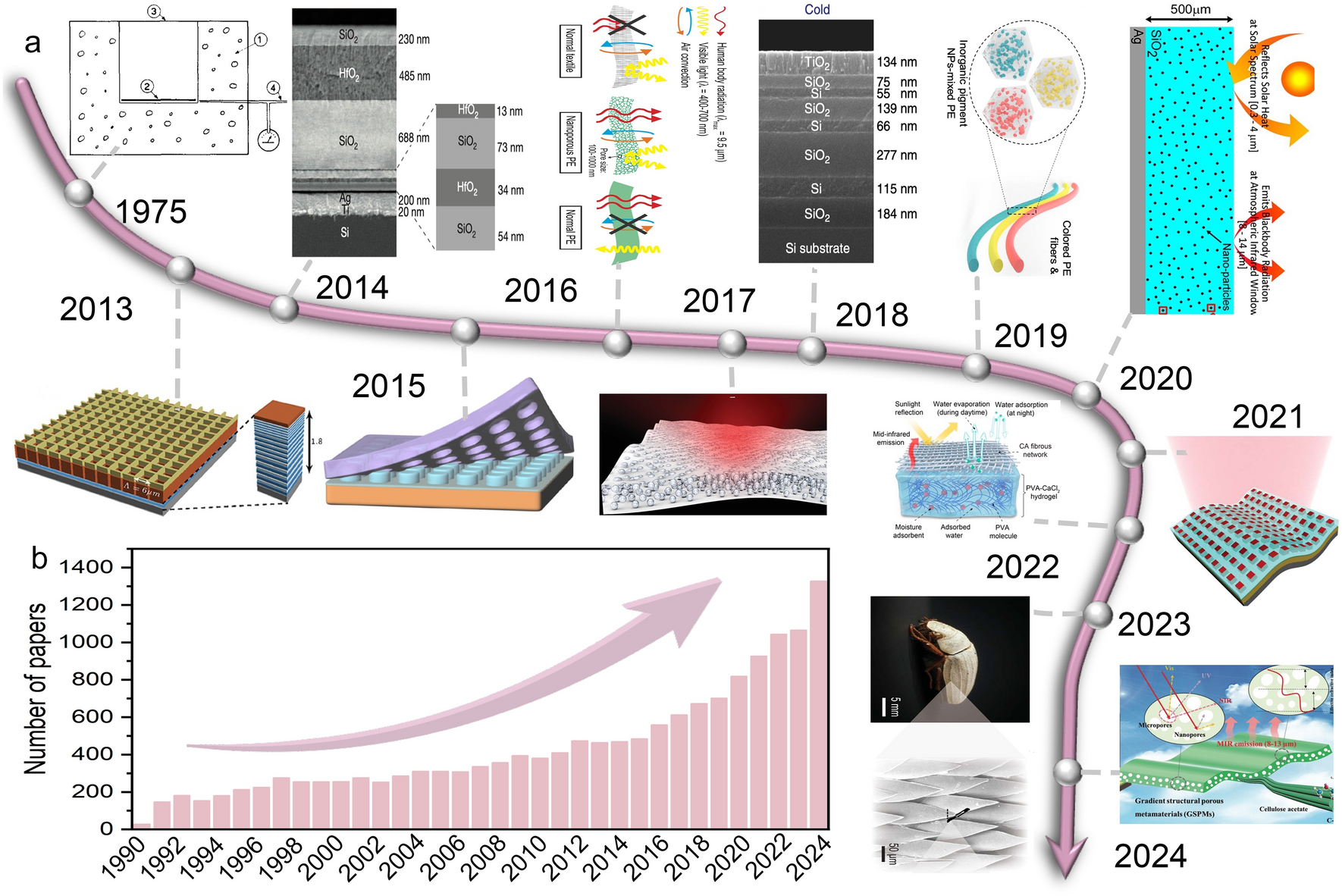Engineered Radiative Cooling Systems for Thermal‑Regulating and Energy‑Saving Applications
Published in Bioengineering & Biotechnology, Materials, and Mechanical Engineering

As global temperatures rise and energy demands surge, traditional cooling methods are becoming increasingly unsustainable. Now, researchers from City University of Hong Kong and Huazhong University of Science and Technology, led by Prof. Jinlian Hu and Prof. Jinping Qu, have published a comprehensive review on engineered radiative cooling systems (ERCSs)—a zero-energy solution for thermal regulation. This work outlines how advanced materials and structures can dissipate heat into space, offering a scalable strategy for energy-efficient cooling across buildings, textiles, and electronics.
Why Radiative Cooling Matters
- Zero Energy Use: ERCSs reflect solar radiation and emit infrared heat through the atmospheric window (8–13 μm), enabling passive cooling without electricity.
- Wide Applications: From smart textiles to building coatings and photovoltaic cooling, ERCSs reduce energy consumption and carbon emissions.
- Thermal Comfort: Enables personal cooling in extreme climates, reducing reliance on HVAC systems.
Innovative Design and Features
- Nature-Inspired Structures: Mimic Saharan ant hairs and butterfly wings for broadband solar reflection and infrared emission.
- Colored & Transparent Coolers: Enable aesthetic flexibility without compromising cooling performance.
- Metastructures & Multilayers: Use porous polymers, electrospun nanofibers, and inorganic emitters to achieve >95% solar reflectivity and >90% IR emissivity.
Applications and Future Outlook
- Thermal-Regulating Textiles: Daytime, evaporative, and responsive cooling fabrics achieve 4–8°C sub-ambient temperature drops.
- Energy-Saving Devices: Cooling wood, wound dressings, water harvesters, and electronics thermal interfaces demonstrate real-world impact.
- Challenges & Opportunities: Future research will focus on environmental adaptability, scalable manufacturing, and AI-integrated smart cooling systems.
This review positions ERCSs as a transformative technology for sustainable thermal management, bridging material innovation and global energy needs.
Follow the Topic
-
Nano-Micro Letters

Nano-Micro Letters is a peer-reviewed, international, interdisciplinary and open-access journal that focus on science, experiments, engineering, technologies and applications of nano- or microscale structure and system in physics, chemistry, biology, material science, and pharmacy.


Please sign in or register for FREE
If you are a registered user on Research Communities by Springer Nature, please sign in